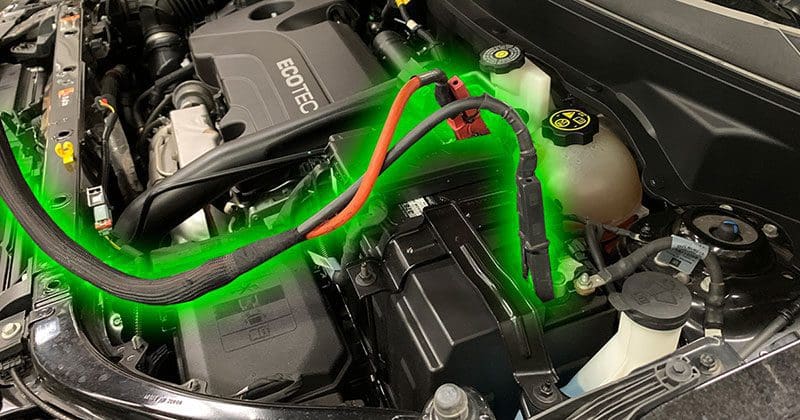It’s the summer of 2021, and we’ve started to put the Covid-19 shutdowns behind us. With stores and restaurants open, people are out and about. Even better, some people are finding time to take a family vacation as our world returns to normal. One change that doesn’t seem to be reverting to its original status is where we work. If you’re working from home and aren’t making that commute to the office, you might find that the battery in your car or truck needs some extra tender loving care.
What You Can Expect out of Your Car’s Battery
The battery in your car or truck is sized to start your vehicle reliably during a regular use pattern. In the eyes of the vehicle manufacturer, this means the car or truck is driven for 30+ minutes a day, at least five days a week. This amount of drive time is required to recharge the battery after starting your vehicle. A 5-minute drive to the corner store won’t be enough to restore the energy it took to start your vehicle.
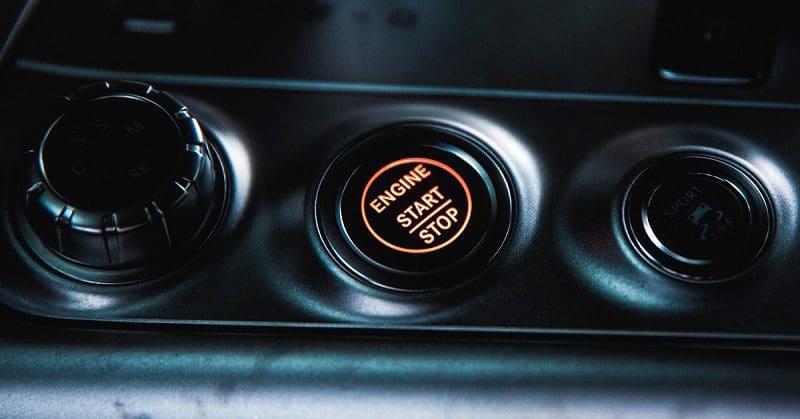
Turning Your New Car Off Doesn’t Turn It All Off
New cars and trucks are full of technologies that remain active even after you’ve turned off the engine, gotten out of the vehicle and locked the doors. There’s a tiny computer somewhere in the radio that’s keeping track of the time and date. If you have a keyless entry system, the antennae and their associated circuitry are listening for a signal from your remote control. If there’s a keyless entry button on the door handle, a computer is monitoring it so it can check the authenticity of your key fob.
These computer systems are optimized to draw the least amount of current possible, but they can still add up to 20 or 30 milliamps, even when the vehicle is parked. After three or four weeks, especially in freezing weather, it can be enough to drain your battery and put you at risk of not being able to start your vehicle.
Premium vehicles may include telematics systems that use the cellular network to talk to an app on your smartphone or vehicle manufacturer. We’ve likely all heard of modern vehicles like Teslas that download software updates in the middle of the night so that they’re ready to go with the latest technology without having to visit the dealership. New Audi, BMW and Mercedes vehicles operate similarly. Though minute, all of this “behind the scenes” work puts a draw on your battery and drains it slowly.
While they work just fine if you use your vehicle regularly, aftermarket car alarms or remote car starters can add 12-20 milliamps of current draw to your battery. Add a telematics system like DroneMobile, and there’s another dozen-or-so milliamp of draw. Even a new amplifier can draw a few microamps of current when turned off. So if you’ve added all the bells and whistles to your new ride, you may find your battery could be drained after a couple of weeks.
Keep Your Car Battery Happy
If you don’t drive your car for several reasonably long periods each week, the batteries can easily discharge to the point of leaving you stranded. We recommend investing in a high-quality electronic charger and keeping it connected to your vehicle. These devices provide a nice gentle charge that will replenish the battery without baking the sulfate layer to the lead plates. Best of all, these chargers know when to stop feeding current into the battery, so there’s no chance of the electrolyte boiling.
Proper charging needs to be methodical. For example, a late-model Honda Civic might have a Group Size 51R battery rated for around 35 amp-hours. This specification means that the battery will be depleted in 35 hours if there is a draw of 1 amp. If the draw is a 0.1 amp (or 100 milliamps), it should last for 350 hours. That’s about two weeks.
Manufacturers recommend a charging rate of no more than 0.3C. For our Honda battery, C is the capacity in amp-hours, so 35 amps. Multiplying our capacity by 0.3 gives us a charge rate of 10.5 amps. That’s the worst-case scenario to fill the battery quickly. We recommend a charge rate of 0.1C, so 3.5 amps for this small battery. If you have a full-size sedan or a truck, then your battery might be rated for 80 amp-hours. Charge it at no more than 8 amps to replenish it thoroughly.
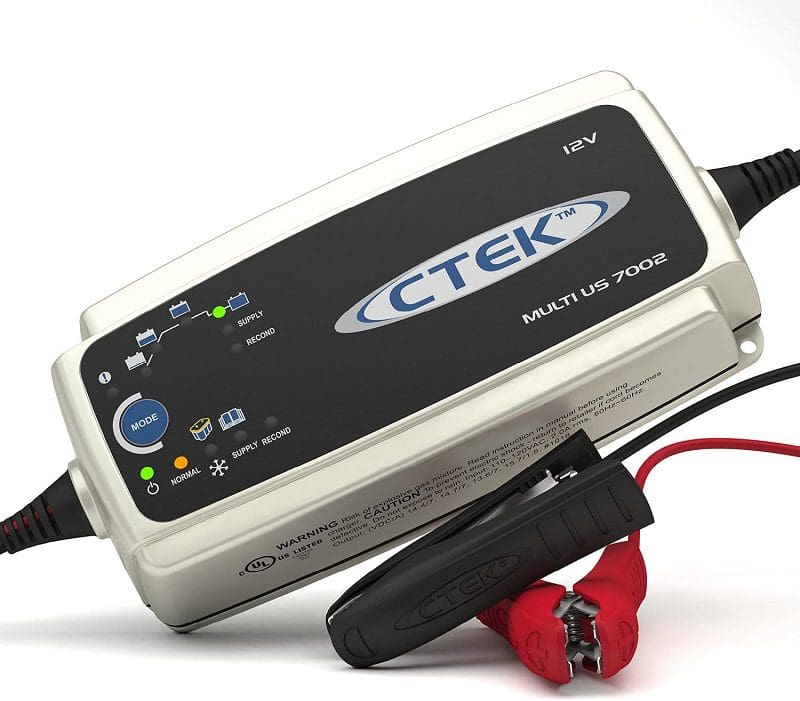
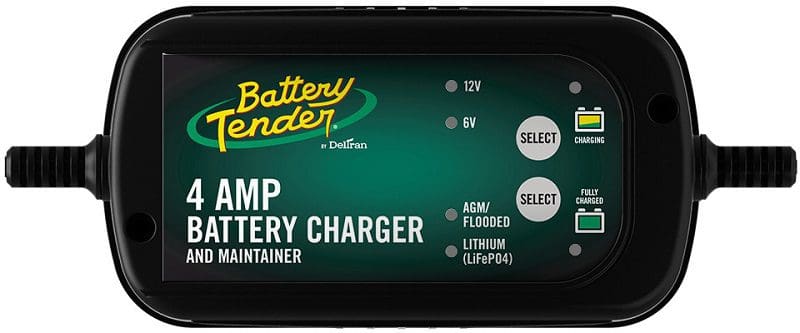
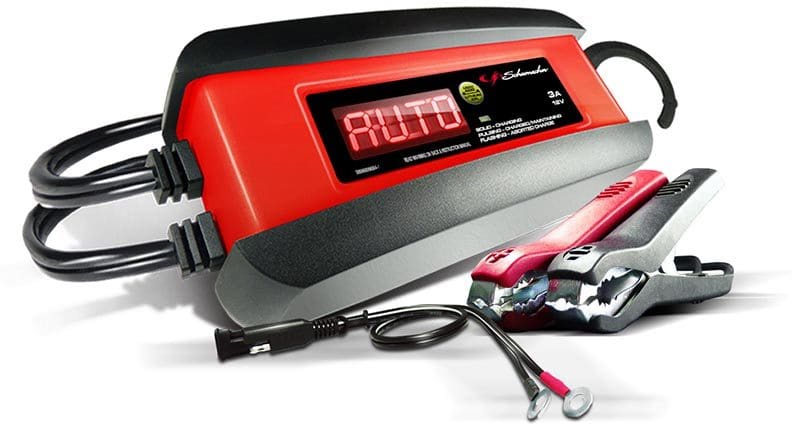
Choosing a maintenance charger is like picking new tires for your vehicle – there are many options. First, find out if your car or truck uses a conventional flooded or “wet cell” battery or if it’s an AGM type. Absorbed glass mat (AGM) batteries may also be labeled as a valve regulated lead-acid (VRLA) cell. All AGM batteries need to be charged to a slightly higher voltage than their classic flooded brethren, so you’ll need a charger that can be adjusted for this.
If your vehicle uses a lithium starter battery, you’ll need a charger specific to that chemistry type. This type of battery may be labeled LiFePO4 (lithium iron phosphate).
There’s a lot more science to battery charging, including a constant current bulk charge, a topping charge and a float charge process to extract the maximum performance from the battery. The CTEK charger we recommend does all of this automatically.
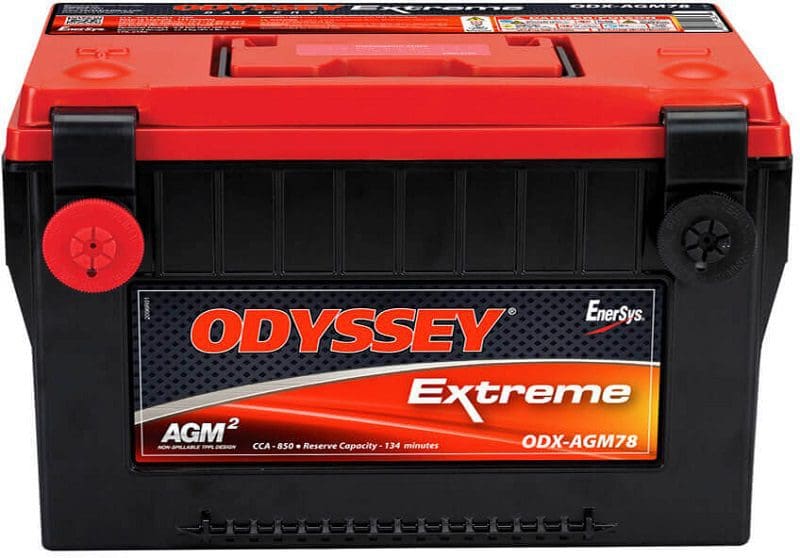
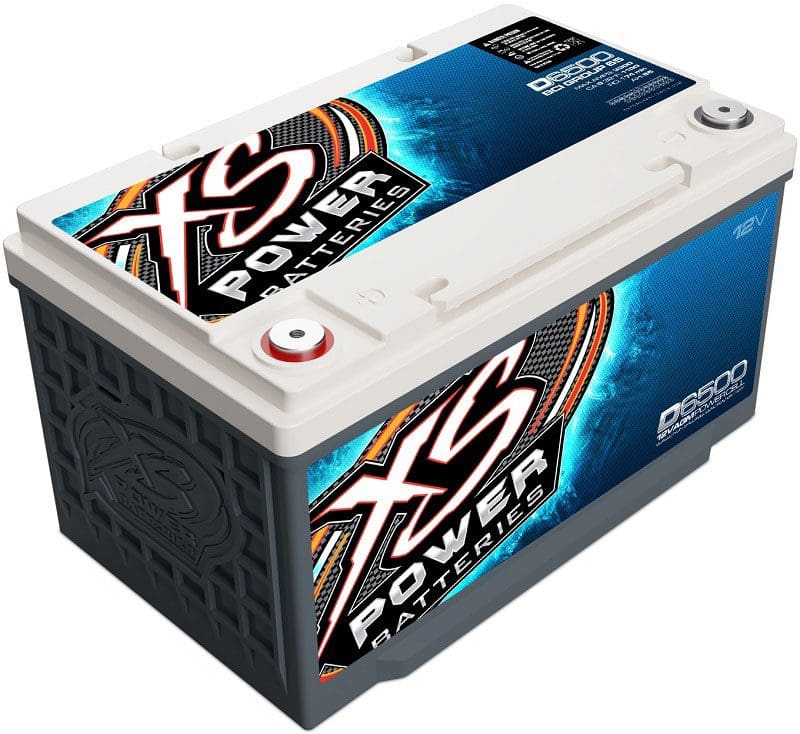
Signs Your Car Battery has Drained
If you have a newer vehicle and have noticed that the engine stop-start feature is no longer working, don’t rush to the car dealer for a repair. Instead, invest in a proper charger and keep your battery topped up. The engine isn’t shutting down when you stop because the vehicle control module knows the battery needs to be charged. By the way, we know some of you don’t like the stop-start feature. Your local specialty mobile enhancement retailer may have a solution that turns this off automatically when you start your car. Drop by and ask.
Of course, if you press the start button or turn the key and the starter motor hesitates or seems sluggish, that’s also an obvious sign that you aren’t driving long enough and your battery needs to be charged.
Other Things To Monitor on an Infrequently Used Vehicle
Short drives aren’t just hard on your battery; they can be hard on the fluids in the vehicle. If you don’t get the engine up to temperature, condensation accumulated in the engine won’t have a chance to boil off. As a result, your engine oil can become contaminated and won’t protect the bearings, cylinders, lifters and other expensive moving parts.
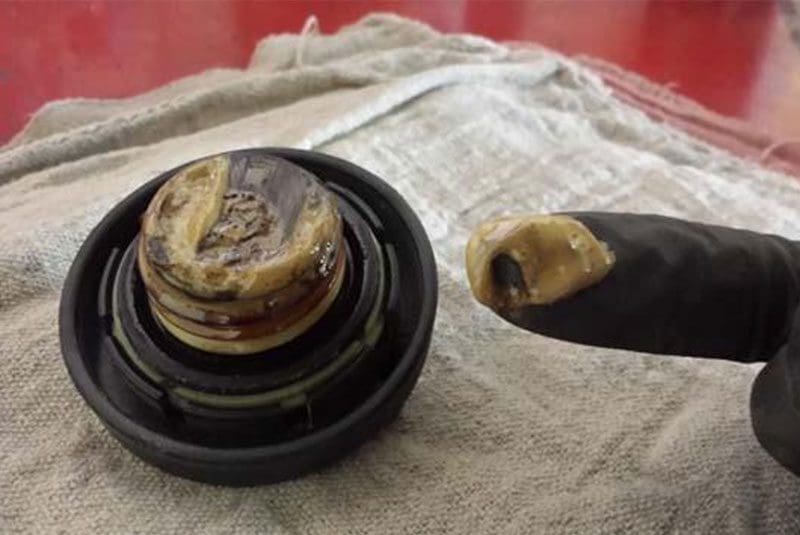
If you’ve looked at your brake rotors after a good rainstorm, you may notice a thin layer of surface rust. This surface corrosion is entirely normal, and even a quick drive with a few stops will wipe this away. With that said, if your vehicle sits for several weeks without moving, the rust may become more significant and leave a mark on the rotors. This level of corrosion can lead to vibrations when braking.
The cure for both of these situations is to go for a good drive of at least 30 minutes at least twice a week. Take your car on the freeway if you can and let the engine and transmission come up to temperature. This 30-minute drive will also help to replenish your car battery.
If your car or truck is sitting, you may want to consider switching to a fuel that has less ethanol in it. While ethanol is an excellent additive for knock prevention, it can leave deposits in the fuel system if it sits for a long time. You’ll find that service centers specializing in small engine repair for lawnmowers and snowblowers recommend using fuels without ethanol.
Be Ready To Go at Any Time
If you find you aren’t driving as much as you used to and have invested in a battery charger, drop by your local specialty mobile enhancement retailer and ask about having a quick-connect plug added under the hood or in the trunk. This type of connection makes keeping your vehicle charged up and ready to go much more convenient. Many shops also have a digital tester that can provide detailed information about the condition of the battery.
